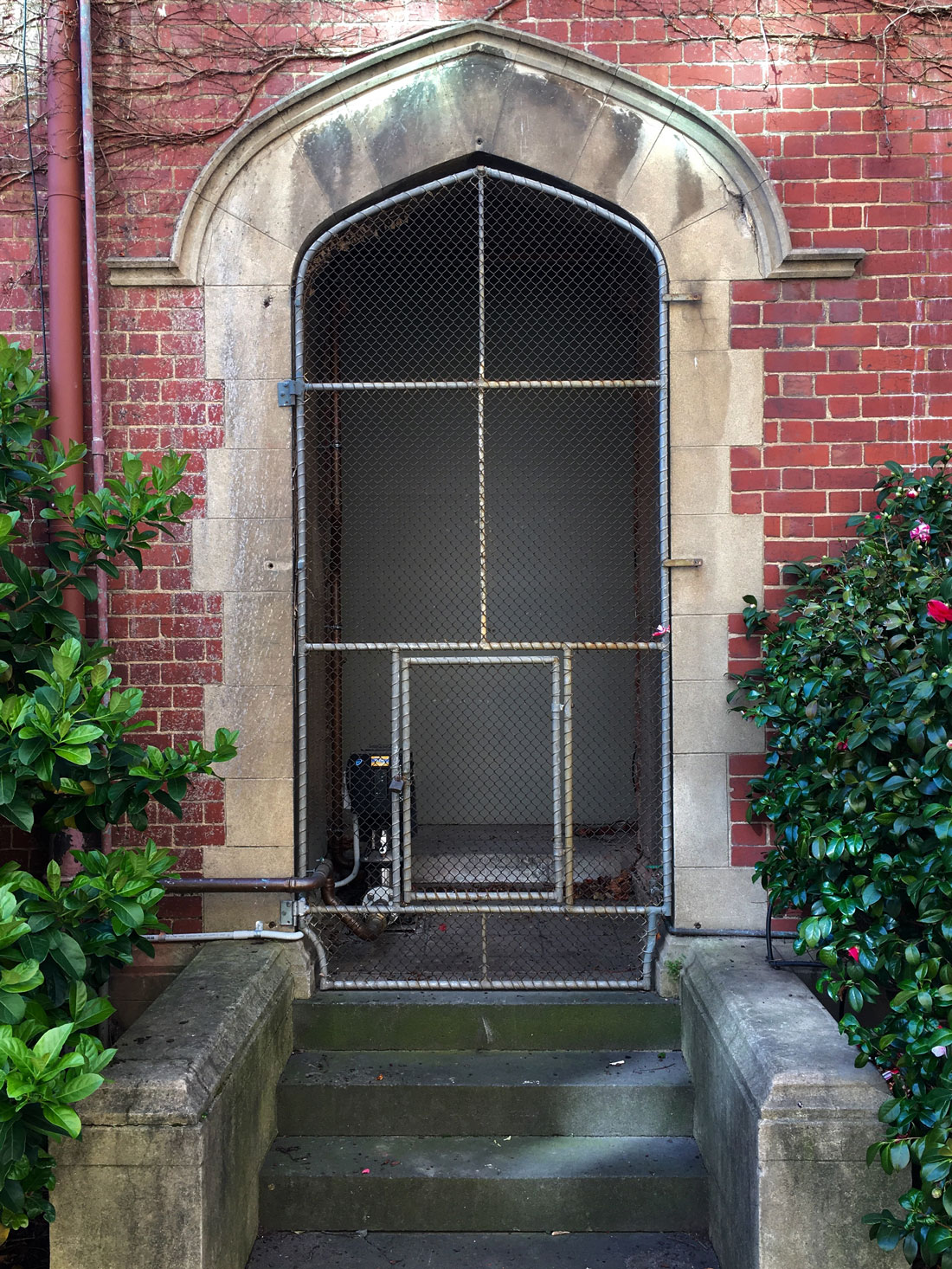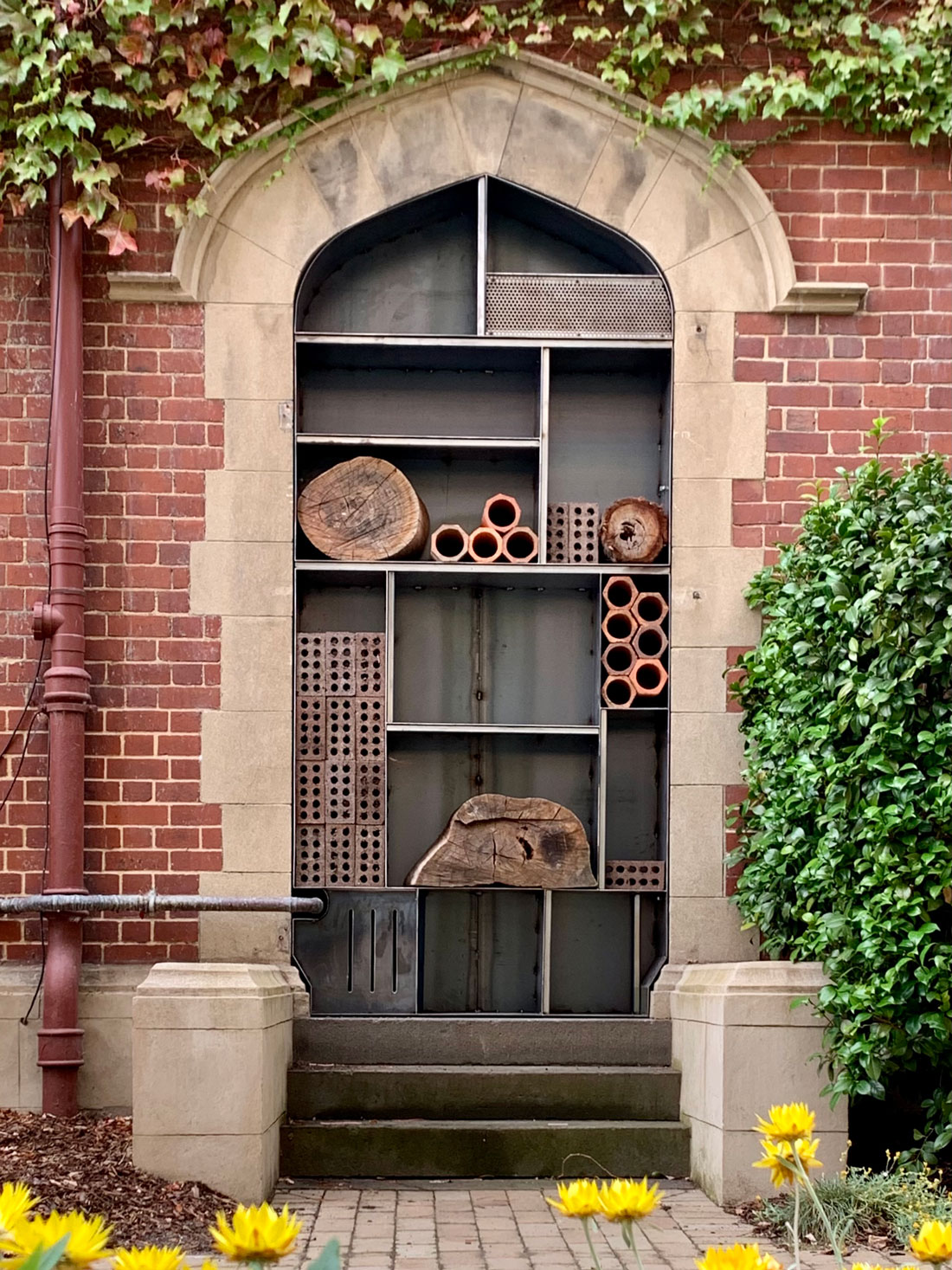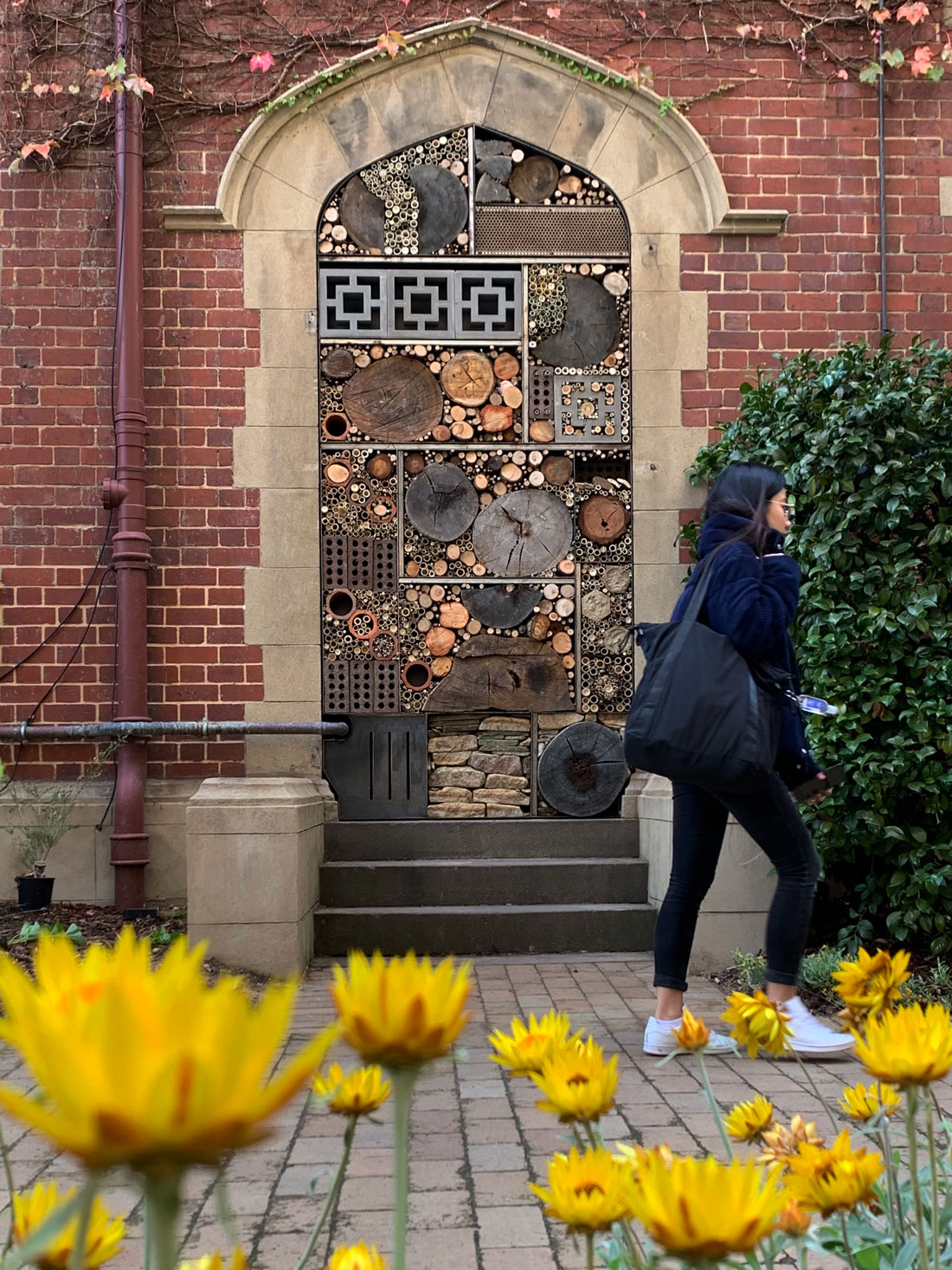Bee and Insect hotel
An insect hotel is located at the main entrance (via Professors Walk) of the System Garden and attracts native bees and insects to the garden.

With bee populations in decline across Australia and world, insect hotels are an effective way to provide the ideal habitat to encourage population growth. Having more native bees and insects around increases the opportunities for local plants to be pollinated.
With its attractive design, the hotel draws attention to the role insects and bees play in pollinating native plant species, educating visitors about our diverse native insect population. Being so crucial to the growth of any garden or green space, they are an intrinsic part of on-campus biodiversity.

Reused materials
The hotel was constructed in early 2021 out of bricks, clay, sawn timber, rocks, breeze blocks and around 200 metres of bamboo, with 98% of materials sourced from University grounds. Fallen branches and bamboo from around the Physics buildings and Vice Chancellors’ residence were cut by University arborists to fit, while the steel frame structure was commissioned to fill a disused doorway of the heritage-listed Botany building.
Other benefits
- Insect hotels also provide research opportunities to monitor bee populations because they attract other species not identified by other sampling methods.
- Hotels can provide bees with limited nesting resources opportunities to increase their reproductive output.
- These kinds of attractive structures can highlight the loss of natural habitat in our towns and cities where unsympathetic landscape management has caused a decline in native bee numbers.
Building the hotel
Spot the species
The following native bee species are expected to be seen around the hotel:
- Homalictus Bees
- Resin Bees
- Leaf Cutter Bees
- Masked Bees
- Reed Bees
- Blue Banded Bees
- Teddy Bear Bees
The insect hotel is another initiative that makes our campus a living lab and is being monitored to measure its success.



